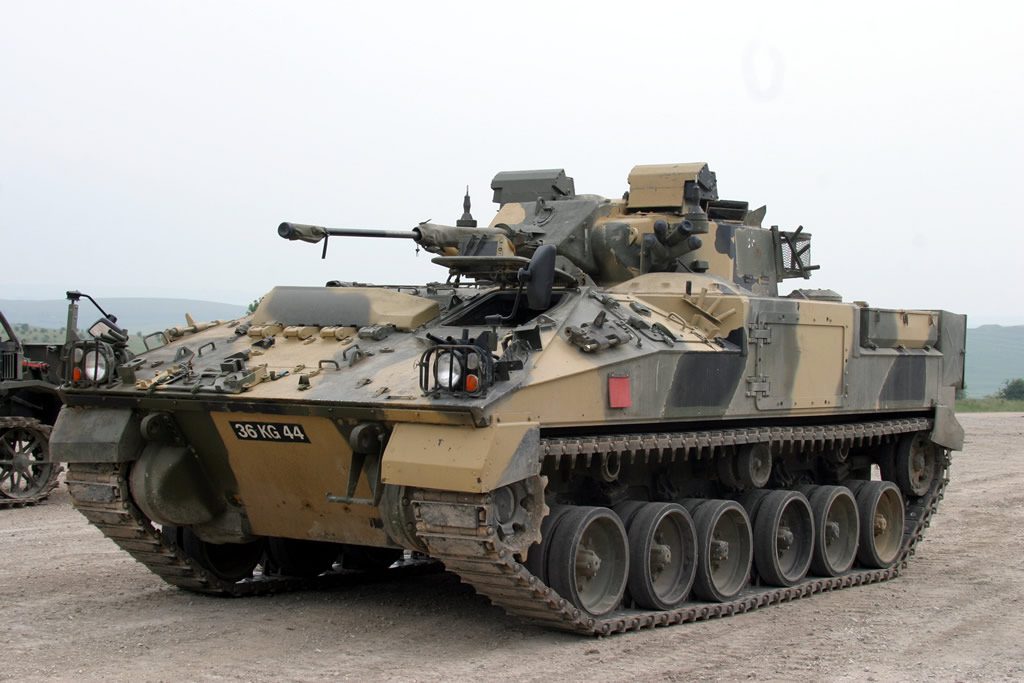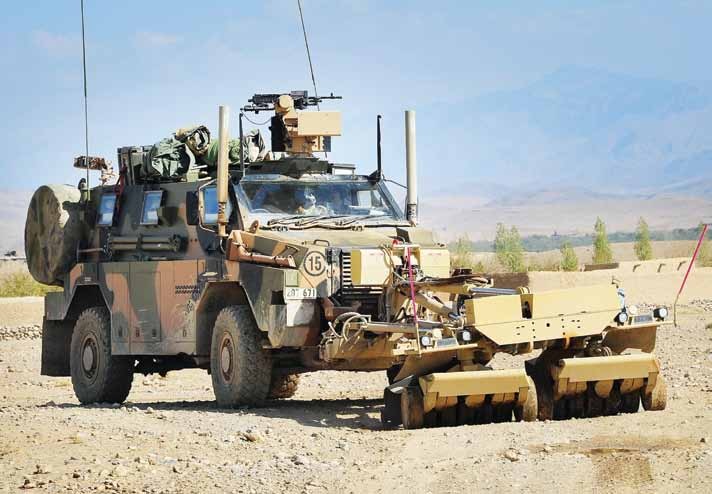Armour plated steel can trace its roots back to the 18 tonnes ‘land-ship’ or tank developed in 1915 during World War I. At that time, the world’s first practical tank, ‘Little Willie’, was constructed from 0.39-inch boiler plate [1] and little consideration was given to protect against anything more than small arms fire.
During World War II armour plate was developed to a much higher degree of technical sophistication due to the greater ballistic challenges of the time. Frontal armour development was one area that accelerated rapidly during the 1940s. Armour thickness developed quickly to face the challenge of large-calibre, solid steel projectiles. WW2 also saw the introduction of the first fusion-welded tank, the Churchill Mk7 and this used some of the first rolled homogenous armour (RHA) steel.
One of the most common wrought or rolled armour steel grades in current use is MIL-DTL-12560K Class 1 RHA with a hardness range of 250-410 HB (Specification, 2013) and DEF STAN 95-24 class 2 – 5 (specification 2002) with a hardness range of 262-655. These specifications have their origins in WW2 and have not altered markedly [2] though they have been modified to incorporate a new class of wrought armour plate, which is heat-treatable to higher hardness ranges than Class 1(MIL-DTL-12560K and DEF STAN 95-24 class 2 as well as some other small improvements [1,2]. Ultra-High Toughness Armour plate satisfies the modified MIL-DTL-12560K class 4 specification and the DEF STAN 95-24 class 4 and 5 specifications.
Rolled Homogenous Armour Steel (RHA)
Although armour plate has moved on in sophistication to encompass ceramics, multilayer composite materials and other ballistic technologies, the basic structure of an armoured fighting vehicle is engineered from monolithic, armour-grade steel, which will serve, without any metallurgical problems, for around 30 years or more. Structural armour steels such as MIL-DTL-12560K Class 1 – 4 are selected and developed to operate within hostile environments and are typically medium-carbon grades of high-quality, reasonable hardenability and are normally represented by the Mn-Mo, Cr-Mo or Ni-Cr-Mo-(V) low-alloy steels [3]. Typically, RHA grades are low-alloy, quenched and tempered, martensitic steels, which are based upon a carbon content of 0.25% with additions of Ni, Cr, Mo and/or Mn for improved hardenability and grain structure.
Learn More: The History of Armor Plate Steel
The additional need for this structural steel to be weldable restricts the total alloy content to a carbon equivalent (CE) of less than 1, typically around 0.8. Most hull constructions are welded fabrications of RHA plate. It should be noted that increasing the hardness of armour steels will usually reduce their toughness. Hardness limits are therefore set for specific steel armour classes to control toughness during production and reduce the risk of shattering or brittle failures for specific steel compositions and applications.
MIL-DTL-12560K is available in various hardness and thickness ranges (e.g., MIL-DTL-12560K: Class 1, 6.35 to 150.8 mm, 340 – 390 and MIL-DTL-12560K: Class 4, 420 – 470. Although ballistic performance commonly increases with hardness, this depends on the threat projectile and armour thickness and toughness. The optimum armour choice will rest on whether the armour is to be applied as a stand alone structural or appliqué armour. The armour designers need to confirm they have selected the armour class that offers the best combination of ballistic performance and structural properties appropriate for the application and environment.
Armour for Modern Warfare
In real-world terms, armour properties (strength/hardness/toughness) are selected to deliver optimised performance against a range of battlefield threats, including armour piercing and fragmentation devices. Such protection has to be provided at realistic densities for an affordable price. Rolled armour steel such as MIL-DTL 1260K and DEF STAN 95-24 has continued to be the predominant armour material for many ballistic applications [4]. The ballistic performance of armour steel is a complicated relationship involving fragmentation and hardness of the steel. In studies [5] using armour piercing (AP) and fragment simulating projectiles (FSPs) projectile shatter was demonstrated to be the controlling mechanism of armour performance. Against softer FSPs (281 HB), where projectile shatter is not relevant, the armour performance was found to initially decrease with increasing plate hardness up to 450 HB due to increased susceptibility to adiabatic shear plugging. Above 450 HB the performance was observed to plateau. This performance plateau appears to relate to a critical threshold for adiabatic shear failure beyond which further increases in plate hardness will not result in a decrease in performance [1, 6].
Masteel’s MIL-DTL-12560K and DEF STAN 95-24 Specification Armour Steel Plates
Masteel UK Ltd offers its own designation of armour steel plate (Protection 400 Armour Steel Plate) that conforms to the MIL-DTL-12560K specification in various hardness grades 250-470 and thicknesses from 6.0mm to 150mm and with a Brinell Hardness of 400 is suitable for military and civilian based armoured vehicles as well as security doors and vaults. Masteel’s protection 400 armour plated steel is produced by a direct quench process for hardness, strength and good dimensional accuracy. Developed explicitly for resistance to artillery projectiles and high explosive, the steel boasts outstanding strength and hardness, which provide excellent anti-ballistic properties. The material has a yield strength of 1000 MPa and a tensile strength of 1250 MPa, providing high-grade protection against breakage and deformation.
Learn More: Armor Plate Steel Available from Masteel
Masteel also produce Protection 400 armour steel plate according to the UK Ministry of Defence DEF STAN 95-24 class 2 specification, which although nominally similar to MIL-DTL-12560K class 1 has some small differences in the relationship between hardness and armour plate thickness. UK DEF STAN 95-24 class 2 is from a Ministry of Defence standard revised in 2002 for RHA armour plated steels used in UK vehicle armour applications [8]. This UK class 2 specification thickness ranges from 3-160mm with hardness from 255 to 341. These figures are slightly different from MIL-DTL-12560K class 1 which spans 6-150mm thickness with hardness ranging from 250-470. Both of these specifications for armour plate are intended for use in applications where very good resistance to penetration is combined with excellent structural properties. These RHA’s can both be cold-worked and are amenable to welding.
Conclusion
Armoured steel is expected to be hard and resistant to shock to protect against high-velocity metal projectiles. Steel with these characteristics is produced by hot rolling cast steel billets of suitable size and then into plates of the required thickness. Hot rolling homogenises the grain structure of the steel (a good balance between Martensitic and Austenitic), removing any deficiencies which would reduce the steel strength and integrity. Rolling also stretches the grain structure in the steel to spread stress loaded onto the steel throughout the metal, avoiding stress concentration in one area. RHA is known as homogeneous armour because its structure and composition is uniform throughout its thickness [7,8]. Alternatively, homogeneous steel plate can be case-hardened to optimise its mechanical properties. The face of the steel, which starts as RHA plate, can be hardened by a heat-treatment process [6] to provide different ballistic requirements.
References
- I Crouch, The Science of Armour Materials, Woodhead Publishing in Materials, 2017
- Gooch, W.A., Showalter, D.D., Burkins, M.S., Thorn, V., Cimpoeru, S.J., Barnett, R., 2007. Ballistic testing of Australian Bisalloy steel for armor applications. In: Paper Presented at the 23rd International Symposium on Ballistics, Tarragona, Spain
- Doig, A., 1979. Comparative anisotropy of quenched and tempered alloy steel plates made by high quality air melting, ESR, VIM &VAR, and VIM &ESR processes. In: Paper Presented at the Sixth International Vacuum Metallurgy Conference on Special Melting, San Diego, CA.
- Ryana,.H.Lib.et al,. The ballistic performance of an ultra-high hardness armour steel: An experimental investigation, International Journal of Impact Engineering, Volume 94, August 2016, Pages 60-73,
- L. Woodward, The Penetration of Metal Targets by Conical Projectiles, Int. J. Mech.Sci., Vol. 20, 1978, pp. 349-359.
- Tabor, The Hardness of Metals, Clarendon Press, Oxford, 1951, p. 108.
- MIL-DTL-12560K (MR), 7 December 2013
- Ministry of Defence, Defence Standard 95-24, Issue 2 Publication Date 2 September 2002, Armour Plate, Steel (3-160 mm)


